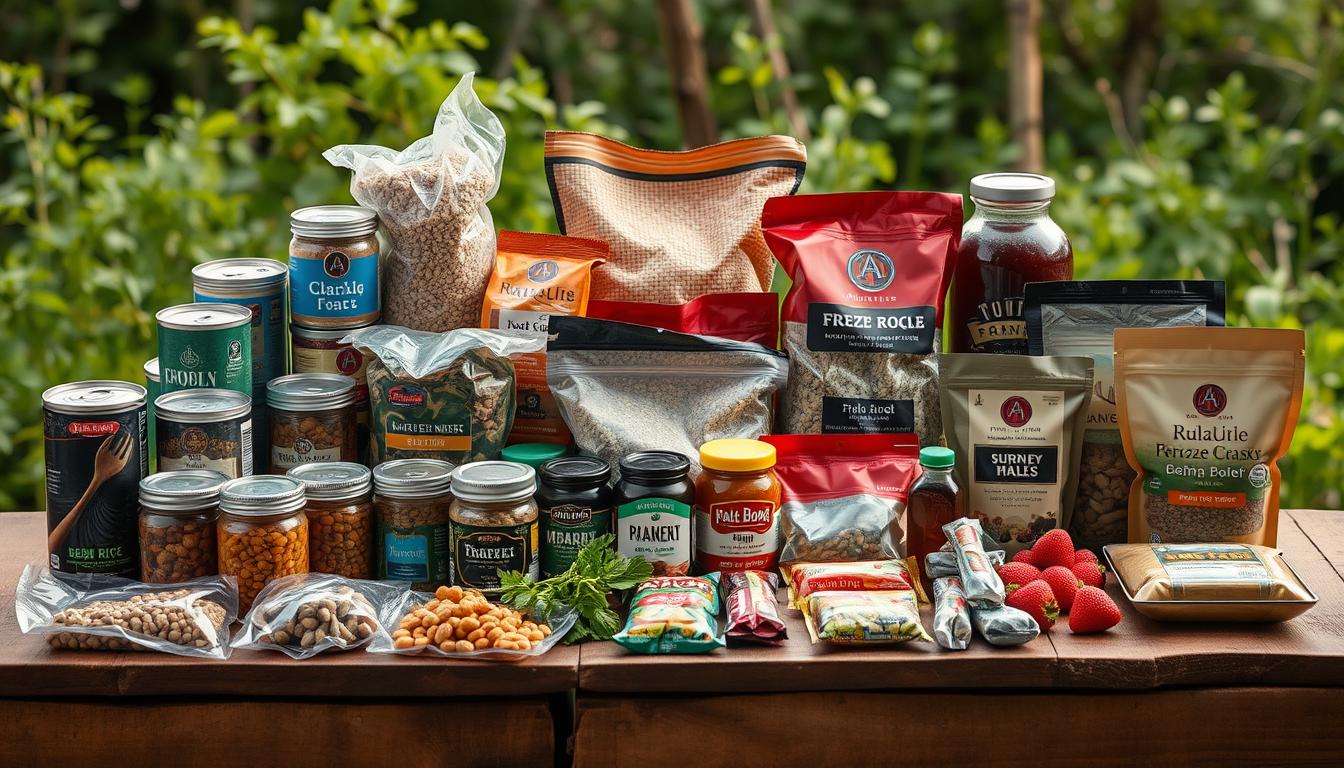In this article, we are going to talk about 11 shelf stable survival foods you must have in your prepper pantry.
Imagine this: dark clouds roll in, the wind picks up, and before you know it, your phone buzzes with severe weather alerts. You glance outside, and it’s clear — this storm is going to be serious.
You head to the grocery store, but it’s too late. The shelves are stripped bare. Panic sets in for some, but not for you.
Why? Because you’re already prepared. Your emergency pantry is stocked with shelf stable survival foods, the unsung heroes of emergency preparedness.
These non-perishable items are peace of mind packed into cans, boxes, and jars.
Whether it’s a short power outage or a more prolonged disruption, having these foods at hand ensures you’re ready for anything.
And we’re not talking about bland, lifeless rations. We’re talking about hearty, nourishing options like canned fruits, grains, and powdered milk that can last years, sometimes decades.
So let’s dive into the 11 must-have shelf stable survival foods that should be in every pantry, because being prepared starts with what you’ve got stored.

Discover how to build a 100+ days stockpile from scratch, in under 10 days!
This is the ultimate guide to building a bulletproof stockpile that takes you from being uncertain about your preps to being 100% confident that your family will comfortably survive the first 100 days & beyond of any disaster.
Table of Contents
Understanding Shelf Stable Survival Foods
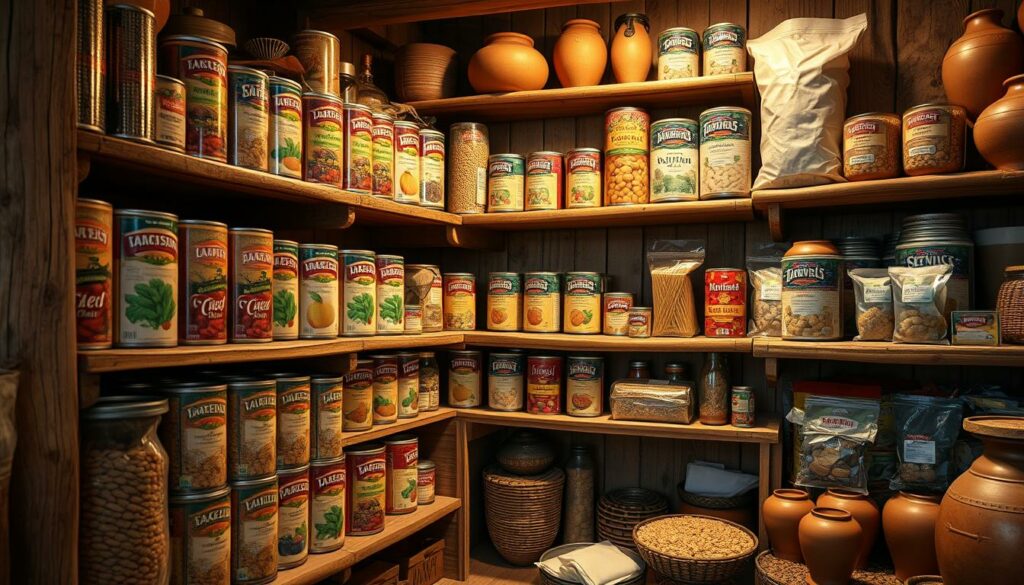
Why are shelf stable survival foods important?
Let’s understand why shelf-stable survival foods are so important.
At first, shelf-stable foods might seem like a small thing. But in an emergency, they become crucial.
These foods are your safety net. They make sure you get the calories, vitamins, and minerals you need to stay healthy, no matter what.
When a crisis hits, your body is already stressed. Eating well becomes even more vital.
Imagine being stuck at home during a snowstorm or facing a power outage for days. Or being trapped in a pandemic lockdown for months.
Without the right food, stress can quickly rise.
But with shelf-stable survival food, you don’t have to worry. You’re ready, calm, and have meals covered.
These foods are your backup when you can’t get fresh groceries. Knowing what to keep on hand makes all the difference.
Characteristics of Shelf Stable Survival Foods
Shelf-stable foods come with a few superpowers that make them ideal for emergency preparedness.
They’re like that friend who’s always there when you need them, reliable and ready to go without much fuss.
One of the biggest perks is their long shelf life.
Many of these foods, if stored correctly, can last years.
You’re not just buying for today — you’re buying peace of mind for tomorrow, next month, or even 10 years from now.
Think about having canned goods, dried fruits, and grains sitting safely in your pantry, quietly waiting for their moment to shine.
What’s great about these foods is that they often require minimal preparation.
When time and energy are in short supply, reaching for food that doesn’t need cooking or complicated instructions is a game-changer.
Whether it’s canned beans that only need to be heated or instant oatmeal that can be made with water, these foods help you conserve both resources and effort.
Then there’s the nutrition factor.
Many shelf-stable options are fortified with essential vitamins and minerals.
You might not be able to get fresh produce during an emergency, but you can still meet your nutritional needs with a well-stocked pantry.
So to summarize, the characteristics of shelf-stable survival foods are:
- Long shelf life: Many products can last years if stored right.
- Minimal preparation required: Most items need little to no cooking.
- Nutritional balance: These foods often include important vitamins and minerals.
Top 11 Shelf Stable Survival Foods to Stock Up On
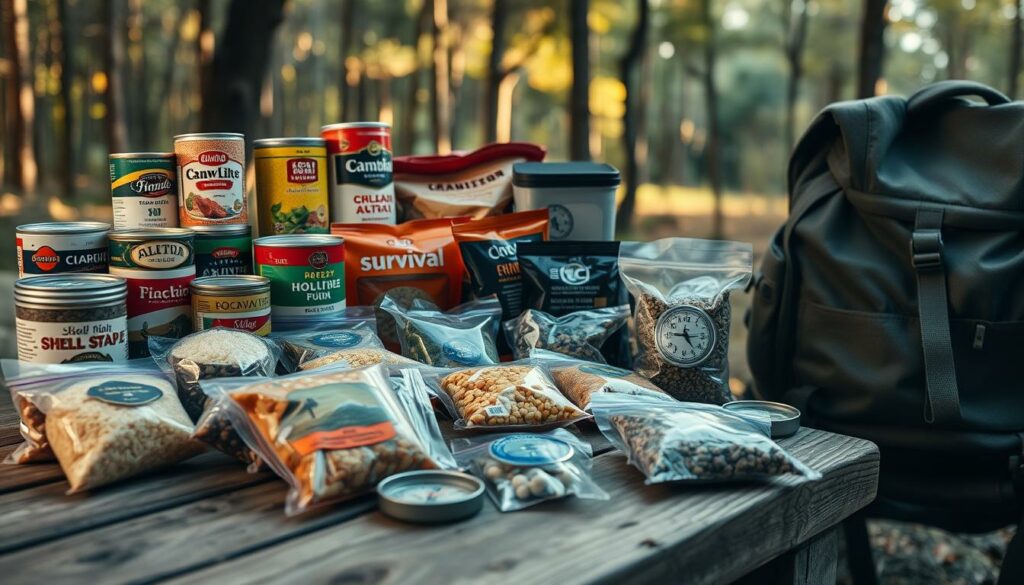
#1: Honey
Honey can last for years if properly stored and it contains natural sugars like glucose and fructose, which provide a quick, easily digestible energy boost — exactly what you need when you’re low on stamina.
This golden liquid can be a game-changer in an emergency, helping you stay sharp and active when you’re on the move or need to make crucial decisions.
There’s also more to honey than just sugar.
It’s also rich in vitamins like B6, niacin, riboflavin, and pantothenic acid, all of which play key roles in maintaining energy levels, supporting brain function, and reducing fatigue.

Then there are the minerals; calcium, magnesium, potassium, and iron.
Calcium and magnesium are essential for maintaining bone health and muscle function, which is especially important if you’re physically active or under stress during a survival scenario.
Potassium helps regulate your body’s fluid balance and supports heart health, while iron ensures that oxygen is properly transported through your bloodstream, helping to prevent weakness and fatigue.
Honey is also loaded with antioxidants, which can help protect your body from free radical damage.
During stressful times, your body is more vulnerable to oxidative stress, and these antioxidants can provide some much-needed defense, supporting your immune system and overall health.
In fact, honey has even been used throughout history as a natural remedy for wounds, thanks to its antibacterial and anti-inflammatory properties.
So, whether you need a morale boost or a quick energy fix, honey offers a simple, natural solution. In times of crisis, a little sweetness
#2: White Rice
White rice is one of those survival food staples that often gets overlooked because it’s so common, but its value in a long-term emergency situation is hard to beat.
This simple grain can last up to 30 years when stored properly, providing you with a reliable source of nutrition when other foods are long gone.
Beyond its impressive shelf life, white rice is incredibly versatile.
It’s the base for countless meals, from stir-fries to soups, and it can even be used in sweet dishes like rice pudding.
In a survival situation, where variety might be limited, having a food that can be adapted to different flavors and dishes is a huge morale booster.
You’re not just eating to survive but you’re eating to stay healthy and keep a sense of normalcy, and white rice helps with both.
Nutritionally, white rice might not seem like a powerhouse at first glance, but it actually has several key benefits.
It’s a good source of carbohydrates, which are essential for providing the energy your body needs to function, especially in stressful situations.
When you’re working to stay warm, make repairs, or even just keep your mental focus, your body burns through energy fast. White rice helps replenish those stores, giving you the fuel you need to keep going.
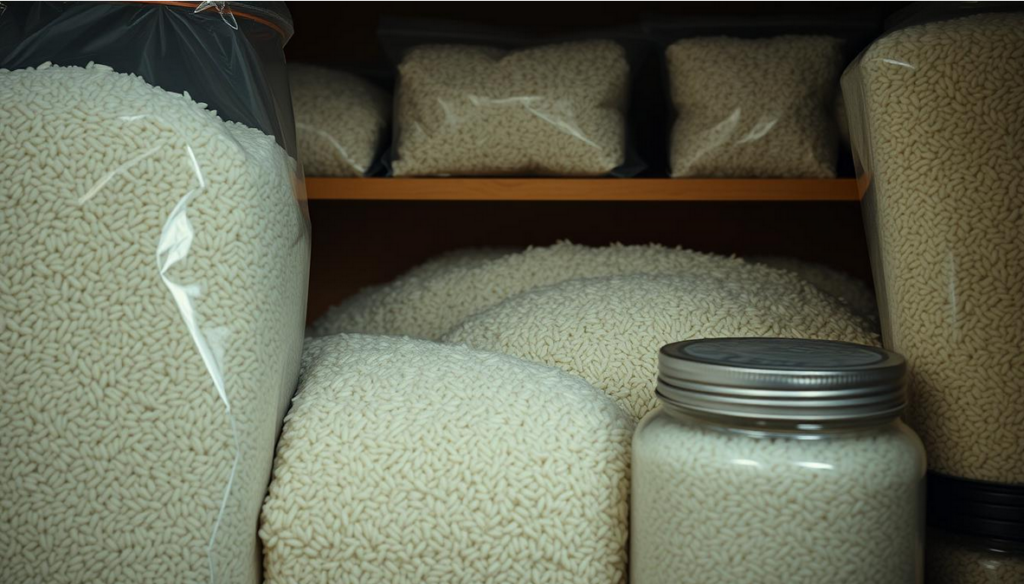
White rice also contains small amounts of protein, which, while not as high as other foods, still contributes to muscle repair and growth.
Even though survival situations might not involve intense exercise, maintaining your muscle mass is important for overall strength and health.
Another often overlooked benefit of white rice is its iron content. Iron is crucial for maintaining healthy blood cells and transporting oxygen throughout your body.
In an emergency situation, where fresh fruits and vegetables rich in iron might be scarce, having white rice in your diet helps prevent iron deficiency, keeping you strong and reducing the risk of fatigue.
Finally, white rice is easy on the stomach.
During stressful times, people can often experience digestive issues due to anxiety or limited food options.
White rice is mild, easy to digest, and unlikely to cause stomach upset, making it a go-to food when you need something simple and reliable.
#3: Dried Beans
These little legumes are packed with fiber and protein, which are essential for staying strong during tough times.
The protein in beans is like fuel for your muscles, helping to repair and maintain them when fresh meat or other protein sources are hard to come by.
Just a small serving can provide the protein needed to keep your body functioning properly.
Then there’s the fiber. Beans are loaded with it, and it’s not just about keeping things moving in your digestive system.
Fiber helps regulate blood sugar levels, which is crucial during emergencies when you might be eating less regularly.
It also keeps you feeling full for longer, preventing hunger from creeping in too soon after a meal.
When you’re in survival mode, every bit of food counts, and beans help you stretch your meals without leaving you feeling unsatisfied.
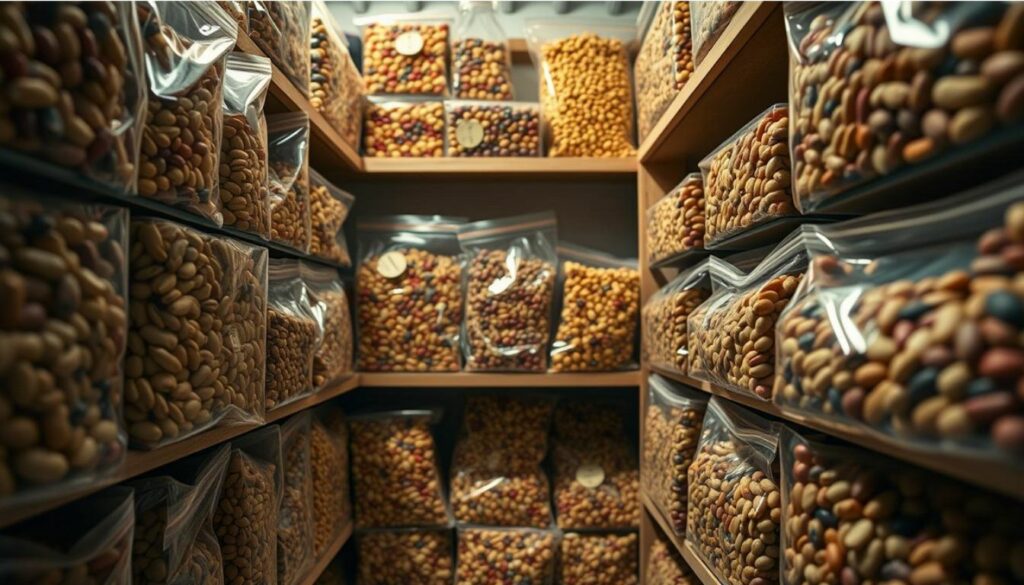
Dried beans are also a good source of complex carbohydrates, which provide a slow, steady release of energy — something you’ll need when dealing with the physical demands of a crisis.
Plus, they contain vital minerals like iron, magnesium, and potassium.
Now, the best part about dried beans is their incredible shelf life.
If stored properly — sealed in airtight containers and kept in a cool, dry place — these little powerhouses can last up to 8-10 years.
That means they’ll be ready for you long after other foods have spoiled.
#4: Salt
Salt has played a vital role in human survival for centuries, long before refrigeration existed.
Centuries ago, when explorers ventured across deserts or sailors embarked on long voyages at sea, salt was a prized commodity, essential for preserving food and keeping it safe to eat over extended periods.
In modern times, salt still holds this power. Whether you’re curing meats, pickling vegetables, or simply adding flavor to meals, salt ensures your food lasts longer and stays edible.
At the core of its benefits lies its ability to maintain electrolyte balance.
Electrolytes are minerals like sodium, potassium, and chloride that carry an electrical charge, and salt plays a crucial role in this process.
Sodium, one of the key components of salt, helps regulate the fluid balance in your body.
It ensures your cells receive the right amount of water, preventing dehydration.
This is important during a crisis when access to clean water might be limited, and staying hydrated becomes even more critical.
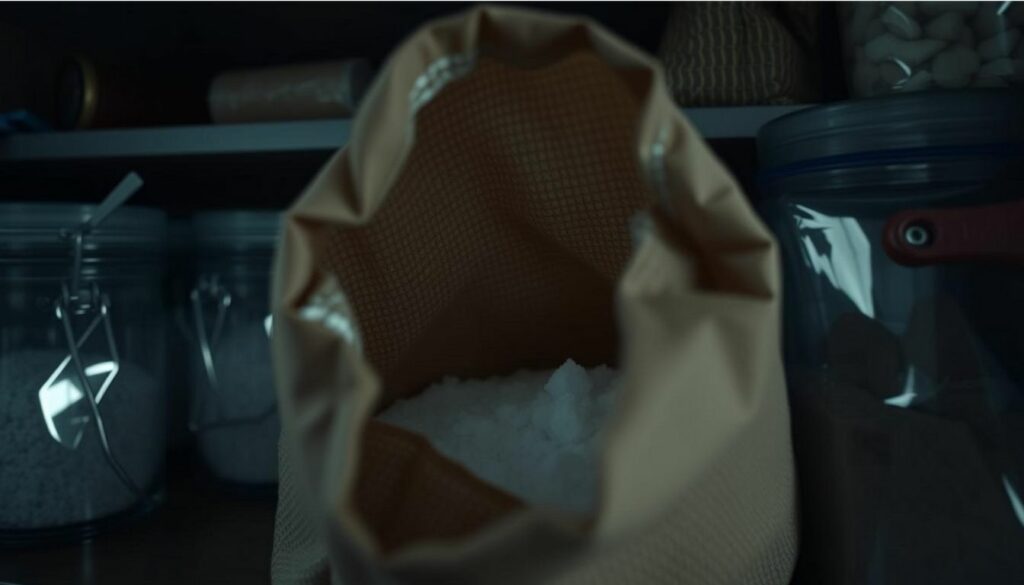
When you’re in a survival situation, physical and mental stress can take a toll, and your body relies on the proper balance of electrolytes to keep your muscles functioning smoothly and your brain sharp.
Sodium allows for the transmission of nerve impulses, helping you stay alert and responsive. It’s the unsung hero behind every breath you take, every move you make.
In situations where you’re sweating more — whether from manual labor or extreme heat — your body loses sodium through sweat.
If not replenished, this loss can lead to fatigue, dizziness, or worse.
Having salt on hand can help keep your energy levels stable.
And let’s not forget about preservation.
Salt has a unique ability to draw out moisture, making it perfect for creating shelf-stable foods that won’t spoil.
When used in curing or fermenting, it prevents the growth of harmful bacteria and molds, making sure your emergency food stash remains safe to eat.
In short, salt isn’t just about taste.
It’s a survival tool that works behind the scenes to preserve your food, hydrate your body, and keep your muscles and nerves working when you need them most.
#5: Sugar
In the middle of an emergency, when resources are scarce and stress is high, sugar can become a hidden gem.
Not only does it provide a quick energy boost, but it also plays a surprising role in lifting spirits.
A little sweetness can go a long way in bringing comfort.
A spoonful of sugar in your tea, a sprinkle on oatmeal, or mixed into a simple treat can make a meal feel just a bit more like home.
From a nutritional standpoint, sugar is a pure carbohydrate, which your body easily converts into glucose — the primary fuel for your brain and muscles.
That burst of glucose helps keep your mind sharp and your body functioning properly, especially during prolonged situations where energy levels might dip.
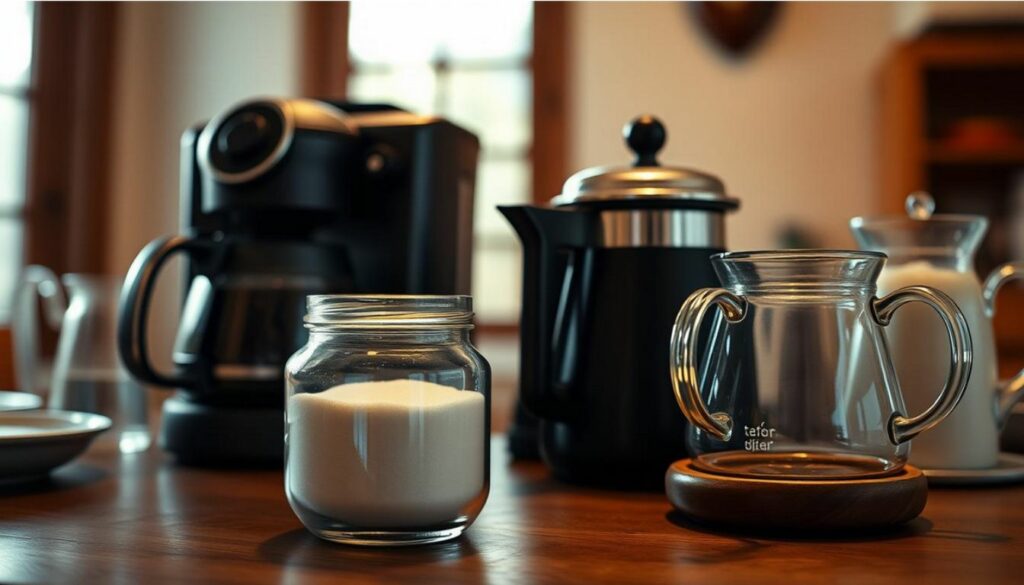
Sugar can also impact mood.
During stressful times, your body often craves a little extra energy, and the sweetness of sugar can trigger the release of serotonin, a hormone that helps regulate mood and reduce feelings of anxiety.
A sweet treat in the midst of chaos can provide not just physical nourishment, but a small psychological lift as well, making those tough moments feel a little more manageable.
Additionally, sugar can help preserve fruits, make bland food more palatable, and even aid in creating essential survival items like homemade electrolyte solutions when mixed with salt and water.
And since sugar doesn’t spoil easily when kept dry, it’s an ideal long-term storage item, ready to serve when needed most.

Discover how to build a 100+ days stockpile from scratch, in under 10 days!
This is the ultimate guide to building a bulletproof stockpile that takes you from being uncertain about your preps to being 100% confident that your family will comfortably survive the first 100 days & beyond of any disaster.
#6: Vinegar
In a cozy kitchen on a stormy night, a jar of vinegar can be a savior.
As you huddle around the table, vinegar adds a burst of flavor to your emergency meals and also works behind the scenes to support your health.
One of its standout qualities is its acetic acid content.
Acetic acid has been shown to help regulate blood sugar levels, which can be particularly beneficial when you’re relying on a diet of preserved foods that might be high in carbohydrates.
This means that a splash of vinegar in your meals could help keep your energy levels steady and prevent those sudden sugar crashes.
Vinegar is also a rich source of antioxidants that help fight off free radicals in the body, reducing oxidative stress and potentially lowering the risk of chronic diseases.
On those long days when you’re confined to your home and relying on shelf-stable foods, keeping your immune system in top shape is crucial.
Vinegar’s antioxidant properties can offer a little extra defense against illness and help keep you feeling your best.

Like salt and sugar, vinegar also has a history of use as a natural preservative.
Its acidity makes it a formidable barrier against harmful bacteria, which is why it’s often used in pickling and canning.
This means that not only does vinegar extend the shelf life of other foods, but it also plays a role in keeping your overall food supply safe.
In your pantry, it’s not just a flavor enhancer but a guardian against spoilage.
Adding vinegar to your survival food arsenal also means incorporating a tool for homemade remedies.
For centuries, vinegar has been used in various cultures as a natural remedy for everything from sore throats to digestive issues.
When fresh produce isn’t an option, vinegar’s presence in your pantry means you have a natural solution to some common ailments, supporting your health in ways beyond just nutrition.
Let’s not forget about vinegar’s role in meal versatility.
During those times when fresh ingredients are out of reach, vinegar can make a big difference.
A few drops can revive the flavors of canned vegetables or beans, turning them from bland staples into something more appetizing.
This simple ingredient can elevate your dishes, making your emergency meals a bit more enjoyable and less monotonous.
#7: Soy Sauce
In the midst of an unexpected emergency, when fresh food is scarce, a splash of soy sauce can transform a basic meal into a savory delight.
Take, for instance, a cold, rainy evening where you find yourself with just rice and canned vegetables.
It may seem like a simple meal, but add a bit of soy sauce, and suddenly you’ve got a flavorful, satisfying dish that lifts spirits and provides comfort.
So, while soy sauce might seem like a small item in your pantry, it’s a big player in keeping your meals varied and flavorful, helping you make the most of your emergency food supply.
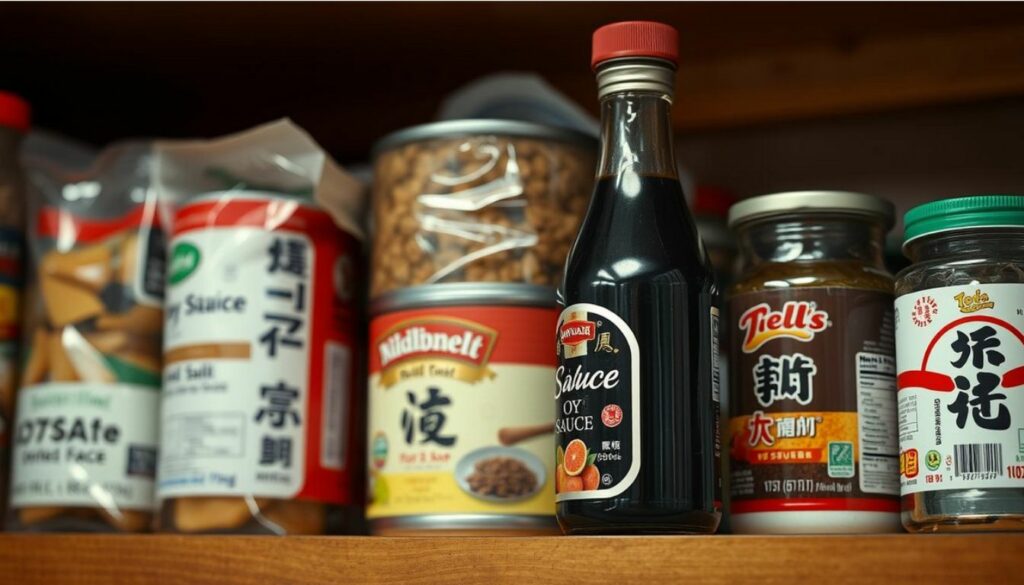
This versatile condiment not only enhances the taste of your meals but also packs a range of nutritional benefits.
It’s rich in essential minerals like sodium, potassium, and magnesium, which are crucial for maintaining proper fluid balance and muscle function.
These minerals help regulate blood pressure and ensure that your body’s cells can function properly, especially when you’re relying on stored foods and might not have a variety of fresh produce.
Soy sauce also contains antioxidants that can help combat oxidative stress and reduce inflammation.
These antioxidants work to protect your cells from damage, which is particularly beneficial during times of stress or illness.
#8: Freeze-Dried Foods
Freeze-dried foods pack a powerful nutritional punch.
Take, for instance, a freeze-dried fruit mix.
Each bite bursts with vitamins and minerals, preserving the vibrant nutrients of fresh produce.
Vitamin C, vital for immune function, helps ward off illness, while fiber aids digestion and keeps you feeling full.
It’s as if the essence of summer berries and citrus fruits is captured and stored for when you need it most.
Then there is freeze-dried vegetable medley.
These veggies retain their rich color and nutritional value, offering a hearty dose of essential nutrients like potassium and vitamin A.
Potassium supports heart health and muscle function, while vitamin A is crucial for vision and immune defense.
Even after years of storage, these nutrients remain potent, ready to support your body through challenging times.
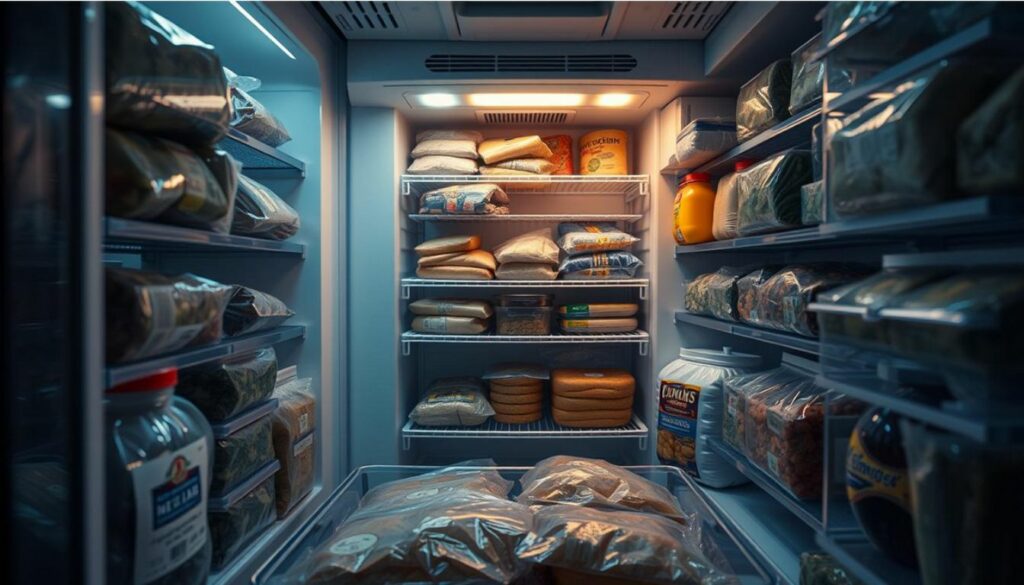
Then there are freeze-dried meals like beef stew or chicken curry.
They are packed with proteins and essential amino acids, crucial for maintaining muscle mass and overall health.
Proteins are the building blocks of your body, aiding in everything from repairing tissues to producing hormones.
With every serving, you’re ensuring that your body has the fuel it needs to stay strong and resilient.
The process of freeze-drying itself is a marvel.
By rapidly freezing the food and then removing moisture through a vacuum process, this method preserves the food’s structure and nutritional content.
It’s like capturing the freshness of a garden harvest or a hot meal, and then sealing it away, ready for use years down the line.
#9: Instant Coffee
In moments of stress or uncertainty, a steaming mug of instant coffee can do wonders for your mood.
Its caffeine content provides a quick energy boost that can help you stay alert and focused, which is especially valuable during prolonged emergencies or lockdowns.
Caffeine acts as a stimulant that blocks adenosine, a neurotransmitter responsible for making you feel sleepy.
By keeping adenosine at bay, caffeine enhances your alertness, improves your concentration, and helps you feel more awake.
It’s like a little pep talk in a cup, lifting your spirits and sharpening your mind when you need it most.

Instant coffee also contains antioxidants, which are crucial for combating oxidative stress in your body.
These antioxidants, such as chlorogenic acids, help neutralize free radicals, which are unstable molecules that can cause damage to cells.
By reducing oxidative stress, antioxidants support overall health and may even enhance your immune system, which is invaluable when facing challenging conditions.
Furthermore, instant coffee is a surprisingly good source of essential nutrients.
It contains small amounts of vitamins and minerals like B vitamins, including B2 (riboflavin) and B3 (niacin), which play vital roles in energy production and maintaining a healthy nervous system.
These vitamins help convert the food you eat into energy, supporting your body’s ability to function optimally, even when your usual routines are disrupted.
So, as you plan your emergency supplies, don’t overlook this humble yet powerful staple.
#10: Powdered Milk
Powdered milk is packed with nutrients that are vital for maintaining health, especially when fresh food options are limited.
It’s a powerhouse of protein, which is essential for muscle repair and overall bodily function.
Every serving of powdered milk provides a substantial amount of protein, which helps your body build and repair tissues, keeping you strong and energized.
Calcium is another key player in powdered milk, crucial for maintaining healthy bones and teeth.
With every sip or spoonful, you’re getting a significant dose of this important mineral, which helps keep your skeletal system robust and supports nerve function and muscle contractions.
During emergencies, when you’re less likely to have access to fresh produce or dairy, this calcium boost can make a real difference.
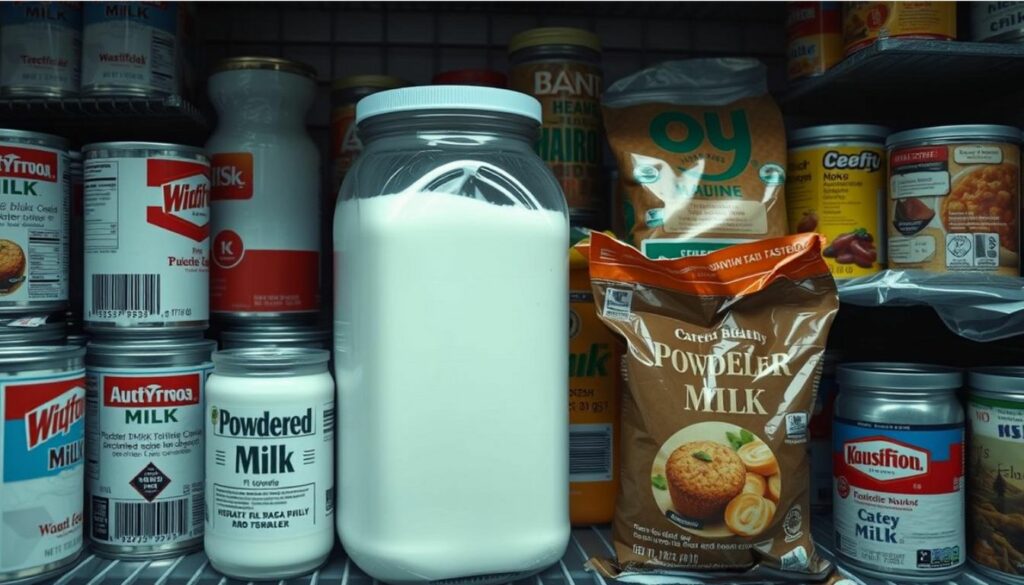
Powdered milk also delivers vitamins like A and D.
Vitamin A is essential for good vision and a strong immune system, which is particularly important when you’re under stress or facing a challenging situation.
Vitamin D works hand-in-hand with calcium to support bone health and boost your immune system.
Together, these vitamins help ensure that even without fresh fruits and vegetables, your body gets the support it needs to stay healthy and resilient.
In a crunch, powdered milk can be used for more than just drinking.
It can be mixed into recipes to add creaminess and nutrition, from soups and sauces to baked goods.
It’s a versatile ingredient that can enhance both the flavor and nutritional content of your meals, making it a valuable addition to your emergency food stockpile.
#11: Canned Foods
When you think of canned foods, you might picture a simple, unremarkable tin sitting on a pantry shelf.
However, these humble cans are packed with a surprising array of nutrients that can keep you healthy and strong when fresh food isn’t available.
First up is canned beans. These tiny nutritional powerhouses are rich in protein and fiber, essential for maintaining muscle mass and digestive health.
Protein helps repair tissues and build muscle, while fiber supports a healthy gut, which is crucial when your diet is limited.
Next, the canned vegetables.
While fresh produce might be out of reach, canned veggies like carrots, spinach, and tomatoes bring a splash of color and a boost of vitamins to their meals.
Carrots are loaded with beta-carotene, which the body converts into vitamin A, a crucial nutrient for maintaining healthy vision and immune function.
Spinach offers a wealth of iron, which is vital for producing red blood cells and preventing anemia.
Tomatoes, often packed with lycopene, contribute to heart health and have antioxidant properties that combat oxidative stress.
Don’t forget the canned fruits, which add not just sweetness but essential vitamins.
A can of peaches or pears is packed with vitamin C, which is key for a strong immune system and skin health.
In a time of limited resources, these vitamins help the family stay resilient against illness, keeping them healthier and more upbeat during a challenging period.
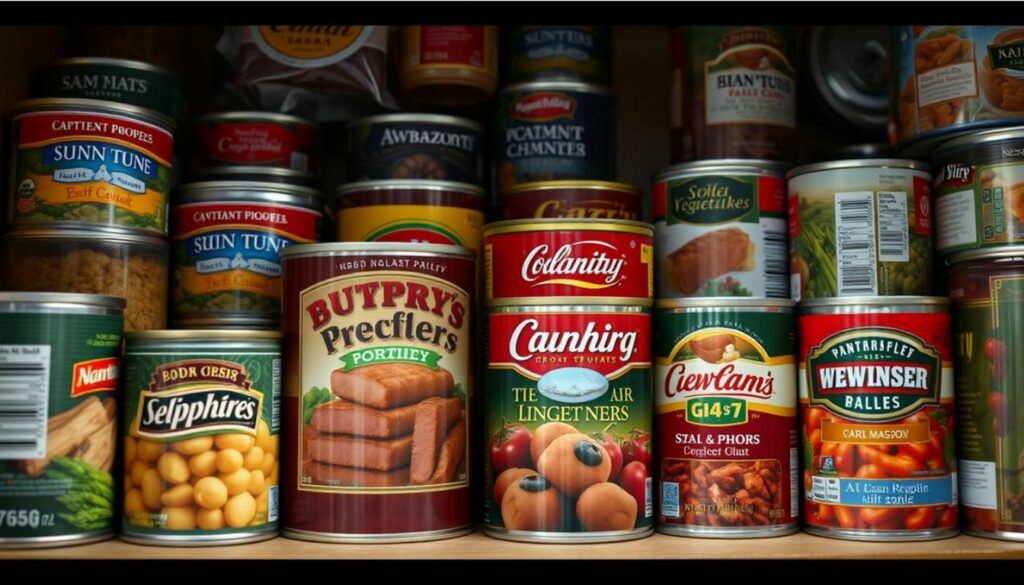
Then there are canned meats, such as chicken, tuna, pork or beef.
These proteins are a vital component of the diet, helping to maintain muscle mass and strength.
They’re also convenient sources of iron and B vitamins, like B12, which is essential for energy production and maintaining healthy nerve cells.
For the family, the canned meat becomes a versatile ingredient, from hearty stews to simple sandwiches, adding both variety and vital nutrients to their meals.
The beauty of canned foods is in their preparation.
With minimal cooking required, these items save time and energy, which is especially valuable when resources are scarce.
These canned goods, once just an afterthought in their pantry, become a symbol of preparedness and resilience in the face of adversity.

Discover how to build a 100+ days stockpile from scratch, in under 10 days!
This is the ultimate guide to building a bulletproof stockpile that takes you from being uncertain about your preps to being 100% confident that your family will comfortably survive the first 100 days & beyond of any disaster.
Adding Flavor and Variety to Your Shelf Stable Survival Foods
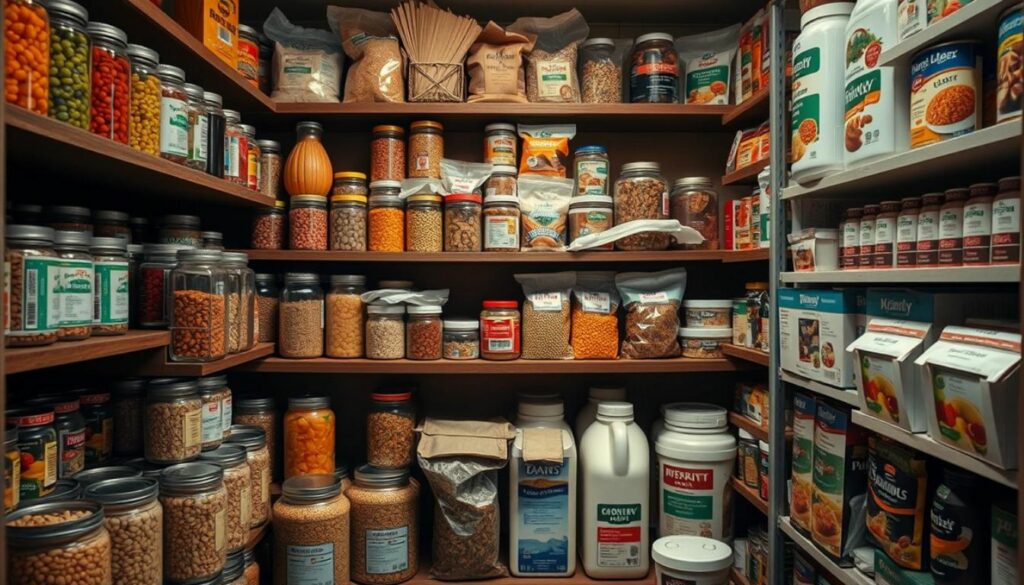
When you’re relying on shelf-stable survival food, it’s easy to fall into a routine of bland, uninspiring meals.
But with a few clever additions, you can transform those basic provisions into flavorful and exciting dishes that keep mealtime enjoyable, even in tough times.
Salt is the first ingredient you can add to enhance your emergency meals. It is a staple in any kitchen and essential for bringing out the natural flavors in food.
A sprinkle of salt can turn a bland can of vegetables into a savory side dish that complements any meal.
Next up is pepper. This humble spice adds a bit of heat, depth and complexity to your meals.
Whether it’s black pepper for a subtle kick or red pepper flakes for a spicy punch, this spice helps keep your taste buds engaged.
In the family’s kitchen, a dash of pepper transforms a basic bean stew into a hearty, comforting dish with a bit of zing.
Anoter great spice to add is garlic powder.
Garlic powder is a versatile spice that enhances everything from canned soups to rice dishes.
The familiar, savory aroma of garlic brings a comforting, homey feel to meals, making them taste richer and more satisfying.
You can also consider to stock up on paprika, which adds a smoky, sweet dimension to meals.
Cumin lends an earthy, warm flavor, perfect for giving beans and rice a more complex taste.
Oregano and thyme bring a touch of herbal freshness, making soups and stews taste like they’ve been simmering all day, even if they’re made from canned ingredients.
Using these spices creatively, the family experiments with different combinations.
A can of tomatoes gets a Mediterranean twist with oregano and basil.
A simple rice dish becomes a fragrant, exotic meal with a sprinkle of cumin and paprika.
Each meal becomes a new adventure, proving that even in challenging times, a little seasoning can go a long way in maintaining morale and making mealtime something to look forward to.
Incorporating a variety of spices into your emergency food storage ensures that your meals are as flavorful and diverse as possible.
Comfort Shelf Stable Survival Foods for Morale Boosting
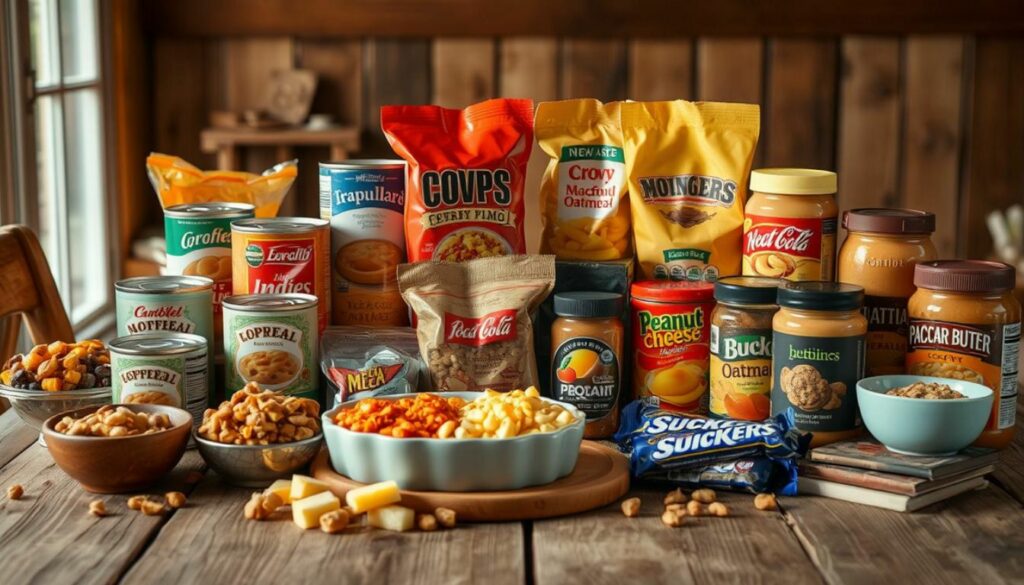
Adding comfort shelf stable survival foods to your emergency supplies can lift your mood and bring a sense of normalcy.
Items that remind you of happy times can lower stress and anxiety.
Think about keeping your pantry stocked with foods you love. These can be both a source of nutrition and a mood booster. Some top comfort items are:
- Dried fruits: this shelf stable survival food is packed with vitamins and natural sugars. Dried fruits are a reminder of sunny days and outdoor picnics.
- Chocolate: the creamy texture and rich flavor of chocolate have been known to trigger the release of endorphins, the body’s natural “feel-good” chemicals. It’s a small pleasure that provides a moment of escape and comfort, turning a dreary day into a bit more bearable.
- Instant pancakes: this might seem like a simple item, but they carry a sense of joy and nostalgia. The ease of preparation means that, even without power, you can quickly whip up a comforting meal that feels like a warm hug from the past.
- MREs (Meals Ready to Eat): often get a bad rap, but they offer more than just convenience. These meals are designed to be nutritious and calorie-dense, providing the sustenance needed in tough times.
These foods act as little beacons of normalcy and joy amidst the chaos.
They remind you of better times and offer a moment of respite from the stress and uncertainty of an emergency.
By keeping your emergency pantry stocked with these mood-boosting items, you’re not only preparing for survival but also caring for your emotional well-being.
In the toughest of times, these small comforts can help keep your spirits high and your outlook positive.
Buying Strategies for Emergency Food Supplies
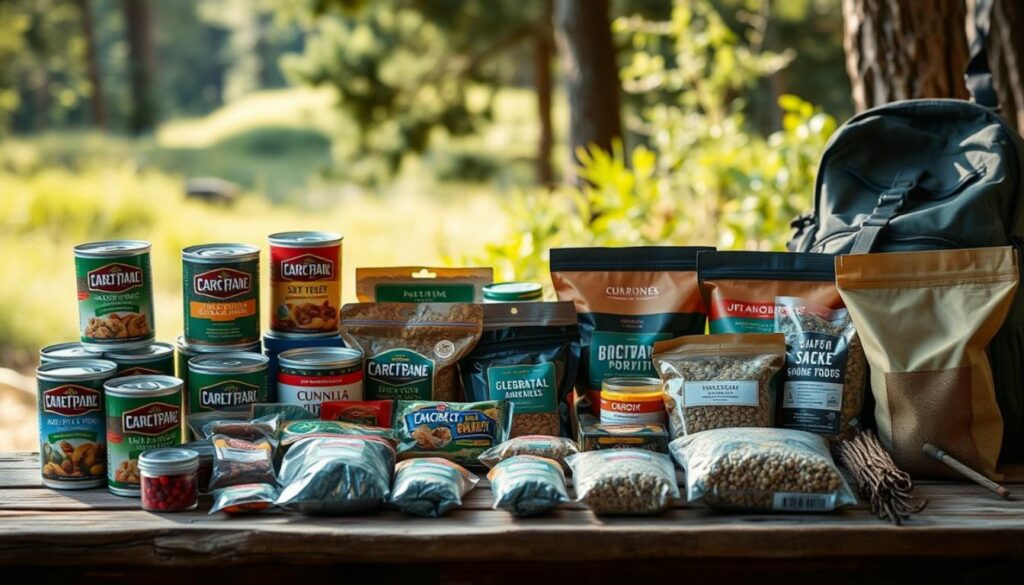
Planning for emergencies means making smart purchasing decisions to ensure you have the right supplies when you need them most.
When it comes to survival food kits, buying smart is key.
Getting canned and bulk survival food not only gives you a steady food source.
By purchasing in bulk and choosing wisely, you can create a reliable stockpile that not only provides steady nourishment but also saves you money in the long run.
Bulk Survival Food Purchases
Buying survival food in bulk is like laying a strong foundation for your emergency preparedness plan. It allows you to secure a substantial amount of essential items at a lower cost per unit, making it both a practical and economical choice.
Consider these staple items for your stockpile:
- Flour: Flour is a versatile ingredient, perfect for baking bread, making pancakes, or thickening sauces. With a large supply, you can create a variety of meals and treats.
- Pinto beans: Pinto beans are a fantastic source of protein and fiber, making them an excellent staple for a balanced diet. They can be used in stews, soups, and salads.
- Rice: Rice is a great source of carbohydrates and can serve as the base for numerous dishes, from stir-fries to casseroles.
- Black beans: Black beans add variety and additional protein to your meals. They’re also rich in iron and antioxidants.
- Maple syrup: Maple syrup isn’t just for pancakes; it can also be used as a natural sweetener in various recipes or as an energy boost.
- Frozen veggies or equivalent canned options: Vegetables provide essential vitamins and minerals, and having a variety of options ensures you can maintain a balanced diet.
- Peanut butter: Peanut butter is a nutrient-dense food that provides protein and healthy fats, making it a great addition to your emergency pantry.
- Spices such as garlic, pepper, and paprika: Spices can transform basic meals into flavorful dishes, helping to keep morale high and making mealtime more enjoyable.
Investing in these items now, even if the upfront cost is around $100 per person for a 30-day supply, is a smart move.
It’s a cost-effective way to prepare for the future while ensuring you’re ready for any unforeseen events.
To maintain the effectiveness of your stockpile, consider rotating your supplies and refreshing them every year. This approach keeps your emergency food fresh and ready, without causing unnecessary stress.
Choosing Canned Survival Food Wisely
Opt for canned survival food that are free from dents, bulges, or rust.
Prioritize quality to ensure that your emergency food remains safe and nutritious.
Key items to look for include:
- Safe Catch Elite Wild Tuna: Known for its low mercury content, this tuna is a high-quality source of protein that is both safe and nutritious.
- Libby’s mixed vegetable cans: These provide a convenient way to add a variety of vegetables to your diet, offering essential vitamins and minerals.
- Tomato paste and corn: These versatile ingredients can be used in countless recipes, from soups and stews to pasta sauces, adding both flavor and nutrition.
- Broth and pasta sauce: These items serve as the base for many meals, helping to create hearty and comforting dishes with minimal effort.
Always check the expiration dates on canned goods to ensure you’re not stockpiling expired items.
By mixing proteins, carbohydrates, and a range of vegetables in your emergency pantry, you’ll be better prepared for any situation, whether it’s a temporary power outage or a more extended emergency.
In summary, buying survival food in bulk and choosing high-quality canned items can significantly bolster your emergency preparedness plan.
This thoughtful approach ensures you have a reliable food supply while saving money and reducing stress in uncertain times.
Proper Storage Techniques for Your Shelf Stable Survival Foods
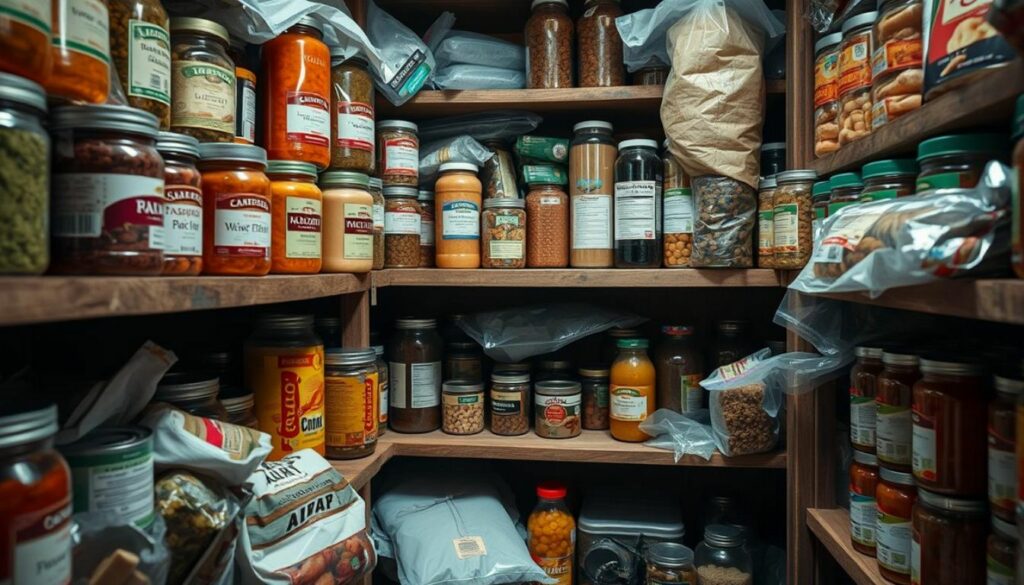
Ensuring the longevity of your long-term emergency food supply hinges on proper storage techniques.
Think of your survival food stash as a cherished resource that needs protection from various threats like moisture, pests, and fluctuating temperatures.
By using the right storage methods, you not only preserve the freshness and safety of your supplies but also ensure they’re ready for action when you need them most.
How to Store Each Food Group
Knowing how to store different foods is crucial for their longevity. Here’s a quick guide on how to store important food groups:
- Grains: Hard grains, such as wheat and corn, are incredibly durable. Store these in airtight containers to protect them from moisture and pests. Properly stored hard grains can last up to 30 years. For softer grains like oats, which are more susceptible to spoilage, using sealed containers and keeping them in a cool, dark place extends their shelf life to about 8 years.
- Dried Beans: Beans are a fantastic staple with a long shelf life. When stored in a dry, cool environment, dried beans can remain good for over 10 years. To maximize their longevity, keep them in airtight containers to protect against humidity and rodents, which can compromise their quality.
- Powdered Milk: This essential for nutrition has an impressive shelf life. Non-fat powdered milk can last up to 20 years if stored properly. Keep it in a cool, dry place and use airtight containers to shield it from moisture and oxygen, which can degrade its quality over time.
- Canned Foods: Canned goods are a cornerstone of emergency food supplies. Low-acid foods, such as meats and vegetables, can remain safe and nutritious for up to 5 years when stored in a cool, dark environment. High-acid foods like tomato sauce and citrus fruits have a shorter shelf life, around 18 months. Ensure cans are kept in a stable temperature to prevent the metal from corroding and compromising the contents.
- Vegetables and Fruits: Drying is a popular method for preserving these foods. For dried fruits, snap-drying is particularly effective, allowing them to last up to a year. Vegetables, when properly dehydrated and stored, can last about six months. Store these in airtight containers to prevent exposure to moisture and pests.
Airtight Containers or Original Packaging?
Choosing between airtight containers and original packaging depends on the food and storage conditions. Original packaging is okay for short-term storage but not great for humid places.
Here’s a breakdown of when to use airtight containers versus original packaging:
- Airtight Containers: These are ideal for dry foods such as grains, beans, and powdered milk. Airtight containers protect against moisture, which can lead to spoilage, and pests that may infest food supplies. Glass jars with metal lids or PETE bottles with oxygen absorbers are excellent choices. They ensure that your food remains fresh by keeping the moisture levels below 10%.
- Original Packaging: For some items like canned goods, the original packaging is sufficient, especially when stored in a stable environment. However, original packaging is generally less effective in humid conditions. To enhance the longevity of these items, keep them in a cool, dark place to prevent light and temperature fluctuations from affecting their quality.
Using these storage tips can help your long-term emergency food last longer. These steps make sure you’re ready for any unexpected situations.

Discover how to build a 100+ days stockpile from scratch, in under 10 days!
This is the ultimate guide to building a bulletproof stockpile that takes you from being uncertain about your preps to being 100% confident that your family will comfortably survive the first 100 days & beyond of any disaster.
Conclusion
It’s key to stock up on shelf stable survival foods for unexpected situations.
Having a mix of nonperishable foods helps meet your dietary needs and boosts your peace of mind in emergencies.
Items like peanut butter and canned beans are great for emergencies.
Adding freeze-dried foods with long shelf lives also helps. This way, you won’t run out of food or face high prices when stores are out.
Don’t forget to store these foods right using airtight containers or Mylar bags. This can make foods like powdered milk and freeze-dried fruits last for years or even decades.
Learning about shelf stable survival foods, how to store them, and smart buying tips helps you face challenges with confidence.
Making sure your food stock is ready can keep you and your loved ones safe, no matter what.

